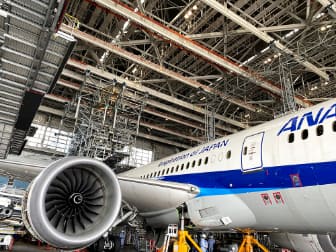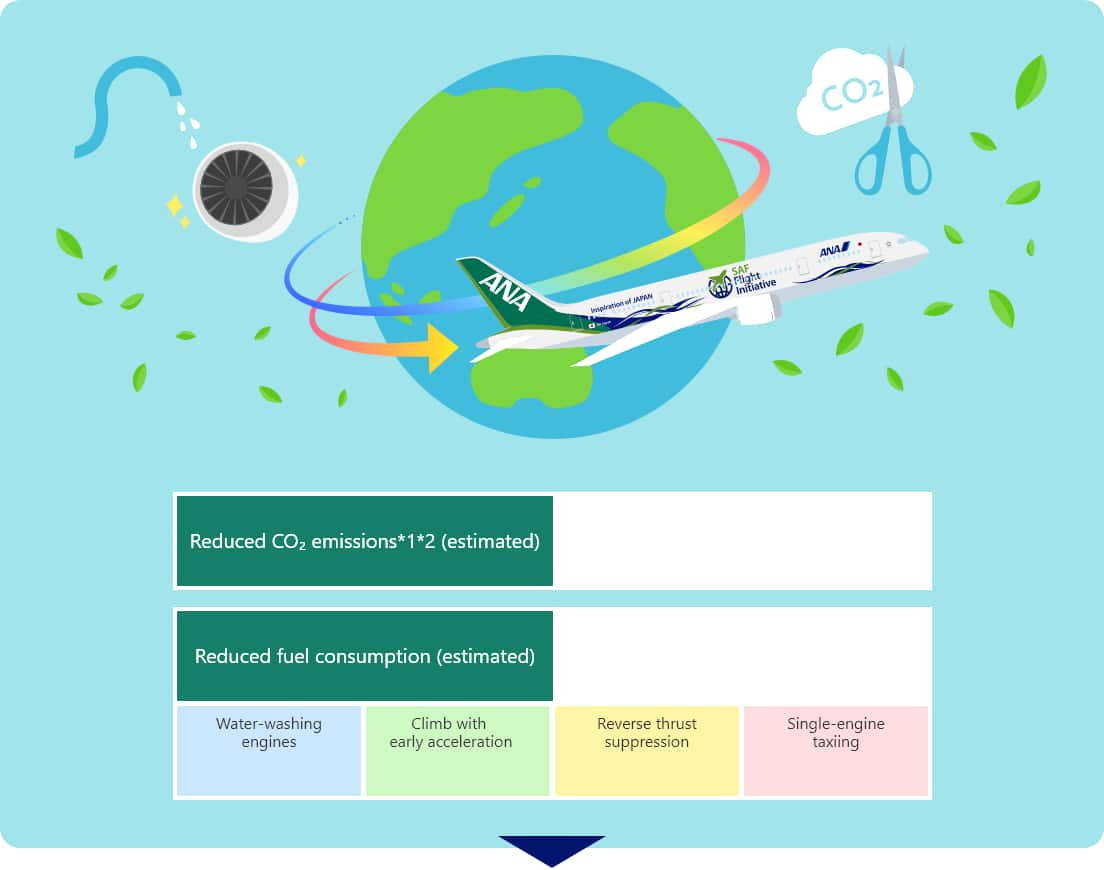

CO₂ emissions reduction results
ANA is implementing various operational measures to reduce CO₂ emissions from aircraft.
Major Initiatives

Water-washing engines
By injecting water into the engine to clean soot and dirt that adhere to the engine during operation at an optimal frequency, engine performance is restored and fuel consumption is reduced.

Reduction of aircraft weight
The cabin is equipped with a variety of items for use in aircraft operation and in-flight services. Electronization and lightweighting reduce the total weight of the aircraft and reduce CO₂ emissions.

Selection of optimum altitudes, speed and routes
For each and every flight, all information is checked to select the optimum altitude, speed, and route, for creating a suitable flight plan that reduces fuel consumption.

Climb with early acceleration
After takeoff, a device called flaps, which increases the wing area of the airplane, is retracted early to reduce aerodynamic drag, thereby reducing CO₂ emissions.

Reverse thrust suppression after landing
Upon landing, the aircraft uses reverse thrust and brakes to slow down, but if there is no safety issue, the engine power when using the reverse thrust system is adjusted to lower level to reduce CO₂ emissions.

Single-engine taxiing
Since ground taxiing is possible with only one engine after landing, CO₂ emissions are reduced by stopping one engine for ground taxiing when it can be done safely.
This video introduces "Climb with early acceleration," "Reverse thrust suppression after landing," and "Single-engine taxiing," which are particularly effective in reducing CO₂ emissions from aircraft.
Let's take a look at how much fuel consumption and CO₂ emissions reduction has been achieved as a result of various initiatives!
Results for February 2025


Reduced fuel 1,734kiloliters means...
The amount of fuel saved is enough to enable a B787-9 aircraft to fly approximately 241,200 kilometers.
241,200kilometers is the distance of 6 circumference of the earth!
Reduced fuel 1,734kiloliters means...
The amount of fuel saved is enough to enable a B787-9 aircraft to fly approximately 241,200 kilometers.
241,200kilometers is the distance of 6 circumference of the earth!
-
*
1
“Reduced CO₂ emissions” for engine water wash is an assumed effect calculated from the estimated fuel consumption saved per wash.
-
*
2
“Reduced CO₂ emissions” for early acceleration, reverse thrust suppression, and single-engine taxiing are calculated based on the estimated reduced fuel consumption obtained from flight data.


